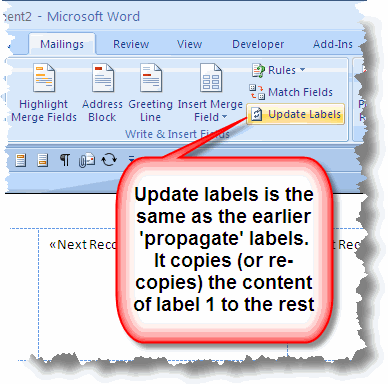Update Labels Greyed Out Word For Mac

Click the 'Label Vendors' drop-down box and select an 'Avery' option. Click the drop-down menu and select an Avery option such as 'Avery US letter' or a different Avery format. On Mac, this drop-down box is labeled 'Label Products' instead. You need to fool Word into believing that you’re creating a merged list of labels. Click the Start Mail Merge button and choose Labels. The Label Options dialog box appears. Click the Cancel button. In the Write & Insert Fields group, click the Update Labels button. The graphic is copied to all labels on the sheet.
If you installed Office 2016 for Mac back in September but haven’t been able to update the suite since, here’s a look at some troubleshooting tips.
I installed Office 2016 on Mac back in September, but I have not been able to update the suite since. Not a big deal, considering I have what needed to do with the suite. Yes, it’s a bad habit, since updating the suite also protects the system from security issues. What ultimately forced me to try and resolve the problem was that I wanted to get the new feature updates, such as the new Full-Screen view in Outlook 2016, reliability and performance upgrades.
Resolve Office 2016 AutoUpdate for Mac not Working
To download the latest updates for Office 2016, I needed to have AutoUpdate version 3.4 installed. Checking for Updates from the Help menu was not working. I even tried to download the update manually, but Microsoft’s Support page behaved unresponsive, even in alternative web browsers.
It turns out the culprit was the DNS server Microsoft uses to connect to the public Internet. Either it’s a compatibility issue with the version of OS X Yosemite or Microsoft is not aware of the problem yet. The not so obvious solution I have found for this is to use Google’s public DNS address. Here is how you do it.
Launch System Preferences and go to Network > Advanced.
Next click the DNS tab and then the Add (+) button at the bottom.
Now enter the following addresses: 8.8.8.8 and 8.8.4.4 then click OK.
Launch, any of the Office 2016 apps, then click Help > Check for Updates then click Install.
Preview's interface is much more Mac like and easier to navigate than Adobe's Reader. Preview has more robust annotation and editing features where Reader is mainly a viewer and submission application. While Reader does have a full screen view, PDFs can also be displayed in a full screen mode with OS X's Quick Look, which is built into the Mac OS. Adobe reader vs preview for mac. Apple's Preview key features include: Thumbnail and table of contents sidebar. View or create password protected PDFs. Delete Pages from within a PDF. Merge PDFs with other PDFs or images. Save a copy of selected pages. Annotate with arrows, circles, squares, notes, links, highlights, underlines, or strike throughs.
That’s it! You should now be back in business and be able to download and install the updates.
This solution might not be for everyone, but it’s worth a shot if you’re having a similar problem. You can always try downloading the AutoUpdate 3.4 update manually first to see if that will work. If not, then you can give the DNS entries a try.
If you installed Office 2016 for Mac back in September but haven’t been able to update the suite since, here’s a look at some troubleshooting tips.
I installed Office 2016 on Mac back in September, but I have not been able to update the suite since. Not a big deal, considering I have what needed to do with the suite. Yes, it’s a bad habit, since updating the suite also protects the system from security issues. What ultimately forced me to try and resolve the problem was that I wanted to get the new feature updates, such as the new Full-Screen view in Outlook 2016, reliability and performance upgrades.
Resolve Office 2016 AutoUpdate for Mac not Working
To download the latest updates for Office 2016, I needed to have AutoUpdate version 3.4 installed. Checking for Updates from the Help menu was not working. I even tried to download the update manually, but Microsoft’s Support page behaved unresponsive, even in alternative web browsers.
It turns out the culprit was the DNS server Microsoft uses to connect to the public Internet. Either it’s a compatibility issue with the version of OS X Yosemite or Microsoft is not aware of the problem yet. The not so obvious solution I have found for this is to use Google’s public DNS address. Here is how you do it.
Launch System Preferences and go to Network > Advanced.
Next click the DNS tab and then the Add (+) button at the bottom.
Now enter the following addresses: 8.8.8.8 and 8.8.4.4 then click OK.
Launch, any of the Office 2016 apps, then click Help > Check for Updates then click Install.

That’s it! You should now be back in business and be able to download and install the updates.
This solution might not be for everyone, but it’s worth a shot if you’re having a similar problem. You can always try downloading the AutoUpdate 3.4 update manually first to see if that will work. If not, then you can give the DNS entries a try.